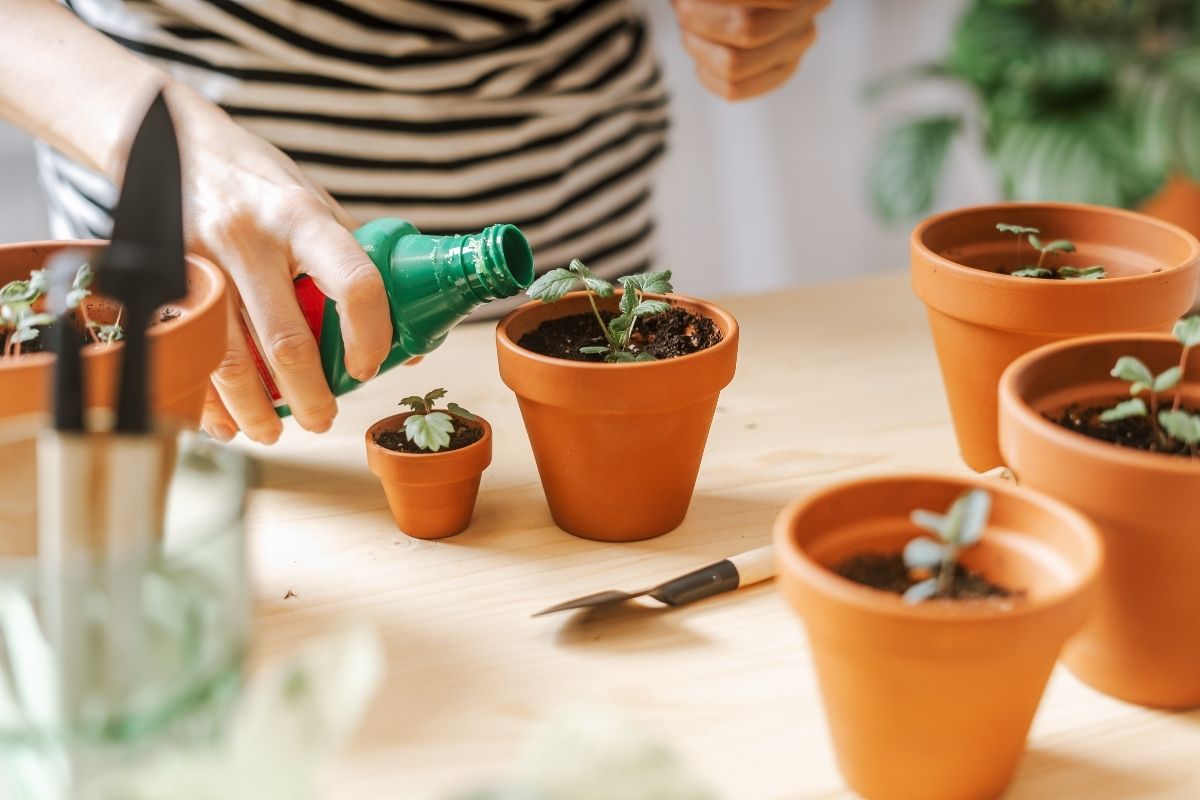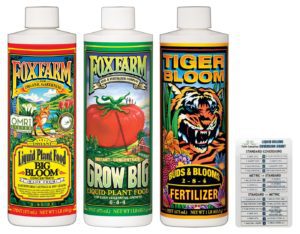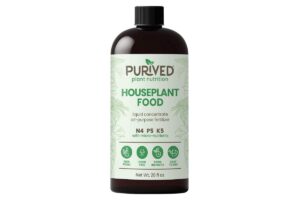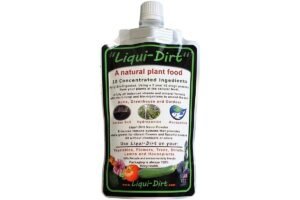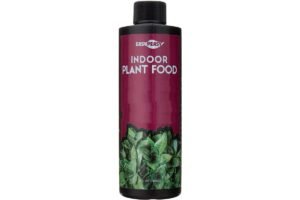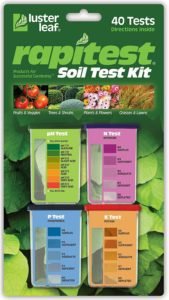Every species of plant is different and has specific needs, including how much fertilizer is right to help it stay happy and healthy. A plant’s original environment, size, age, and current growing conditions all contribute to the amount of fertilizer it should be given.
A general rule of thumb, however, is to follow the directions of the product you’re using, and when in doubt, less is more! Using too little fertilizer for your indoor plants will still deliver some nutrients, but too much can damage the plant.
Not to worry, we’ve already tried these out for you. We’ve put too much fertilizer and we’ve put too little. In this post, I’ll share what I’ve learned as well as the best practices I should have followed 🙈
why you should fertilize your houseplants
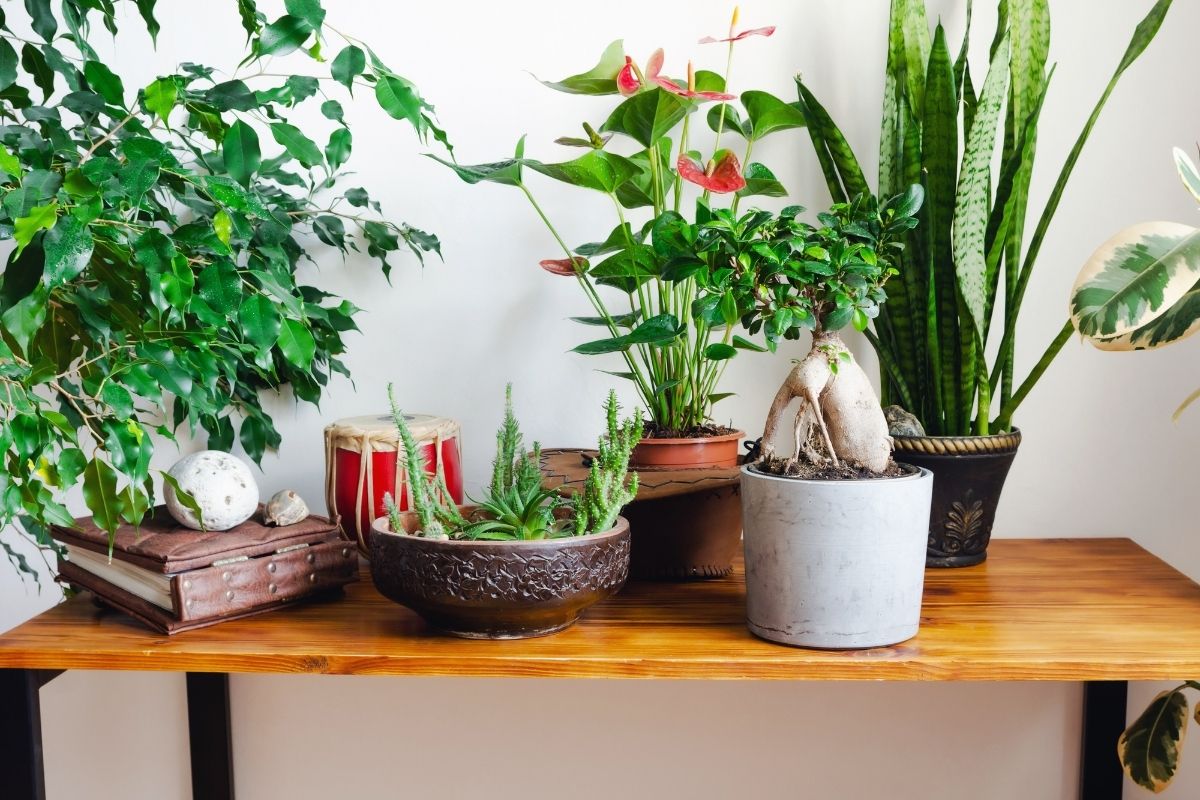
Your indoor plants live their lives in their pots, which contains a finite amount of nutrients in the soil. As the plant grows and absorbs nutrients, the soil becomes depleted. In nature, the nutrients are regularly replenished, but we have to make sure our potted plants receive the right amount of nutrients every year to maintain their health.
Fertilizers provide essential nutrients in abundance, delivering the key macronutrients, and often micronutrients, plants need to be able to perform vital processes. The amount of each nutrient contained in the product will be shown as a percentage, listed in NPK order. For example, you may see a 2-2-2 organic fertilizer, or a 15-15-15 synthetic formula. These refer to the amount of nitrogen, phosphorus, and potassium in the fertilizer. Those ratios are important because it lets you know how concentrated the solution is, which affects how much you need to apply at a time.
types of fertilizer
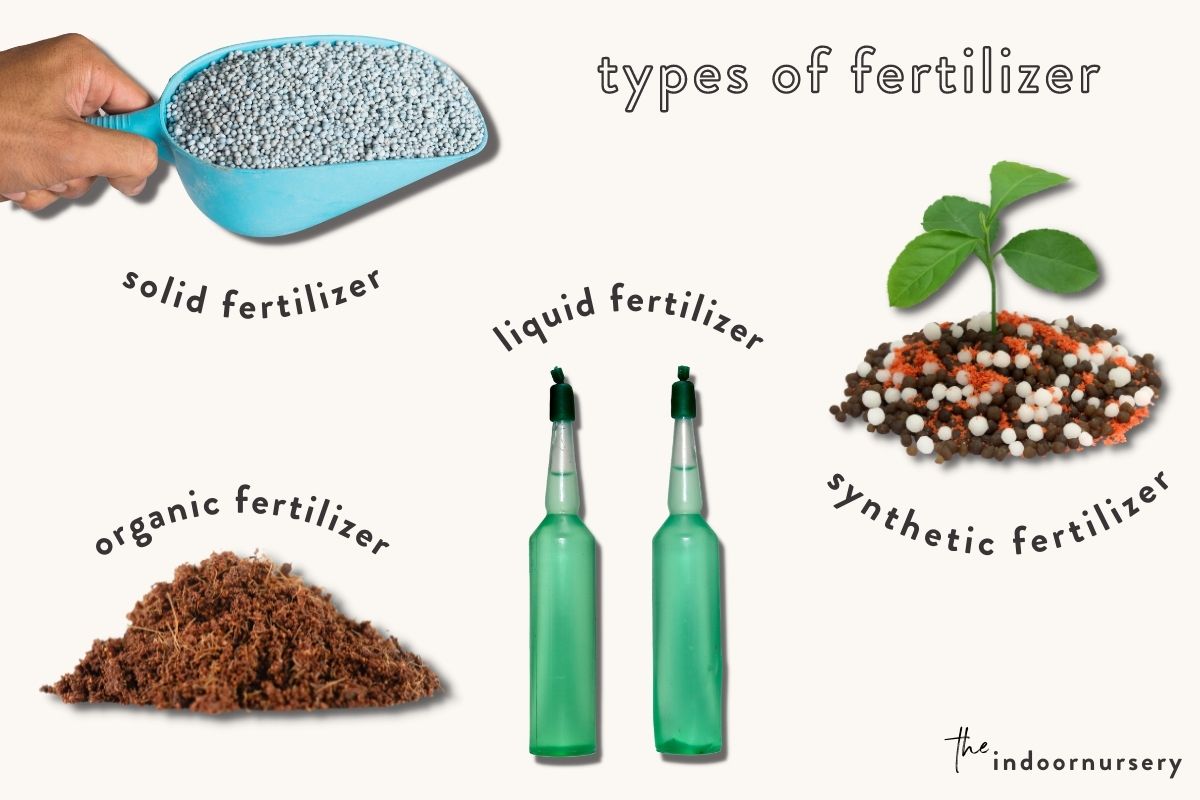
There are many fertilizers in different concentrations depending on the type and formula. The biggest differences between them are whether the fertilizer is in a solid or liquid form, and if it is organic or synthetic.
liquid fertilizer
When you apply liquid fertilizer, the nutrients are able to be absorbed immediately. You have to be careful when it comes to how much liquid fertilizer you give a plant since it’s usually very condensed and, if not diluted, overwhelms the plant roots. Diluting a liquid fertilizer is a great way to incorporate a small serving of nutrients to the plant on a regular basis (again, depending on what type of plant it is). Liquid fertilizers are easy to use and fast to be absorbed, but these nutrients don’t stay in the soil for a long time.
solid fertilizer
Solid forms of nutrients like granular fertilizers and organic materials sit in the soil and break down over long periods of time. The nutrients are then delivered to the plant in small amounts with each watering. For that reason, solid fertilizer gets applied much less frequently than liquid kind.
organic fertilizers
Organic fertilizers are made of material from natural sources, including solid forms like compost and worm castings, and liquid forms like fish or seaweed emulsions and banana tea. These natural forms of fertilizer are less potent than synthetic products, but they are gentle and the solid matter contributes to the soil quantity as well as the quality. These contain a range of macro and micronutrients, as well as other substances like bacteria, humus, and fungus, that synthetic formulas don’t.
synthetic fertilizers
Synthetic fertilizers are man-made products containing isolated nutrients, which come in both liquid and solid forms, that deliver concentrated nutrients that are easily absorbed by your plant’s roots. Follow directions closely when using synthetic or chemical fertilizers, because too much can burn roots when they absorb an excess of nutrients, or are damaged by the salt-based formulas.
release rates of fertilizers
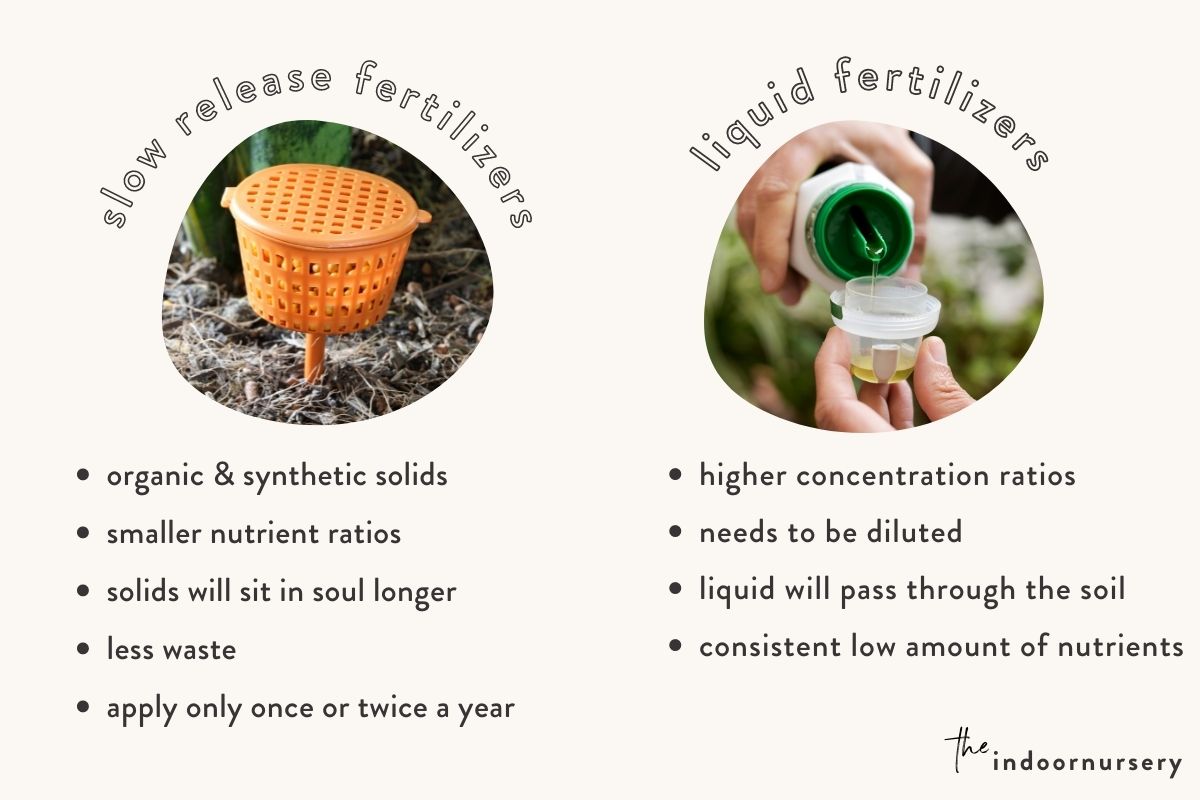
Slow-release fertilizers like organic and synthetic solids tend to have smaller nutrient ratios than concentrated synthetic liquids since the solids will sit in the soil longer, less will be wasted. The liquid forms tend to have higher concentration ratios (which usually need to be diluted) because some of the nutrients won’t be absorbed, since the liquid will pass through the soil.
Many plant parents use a heavily diluted amount of liquid fertilizer once every other week during the plant’s growing season to deliver a consistent low amount of nutrients, rather than applying a larger amount at once less frequently. Since solid fertilizers stay in the soil longer, they need to be applied only once or twice a year.
Want to know which fertilizer works best? Read our plant fertilizer experiment to find out.
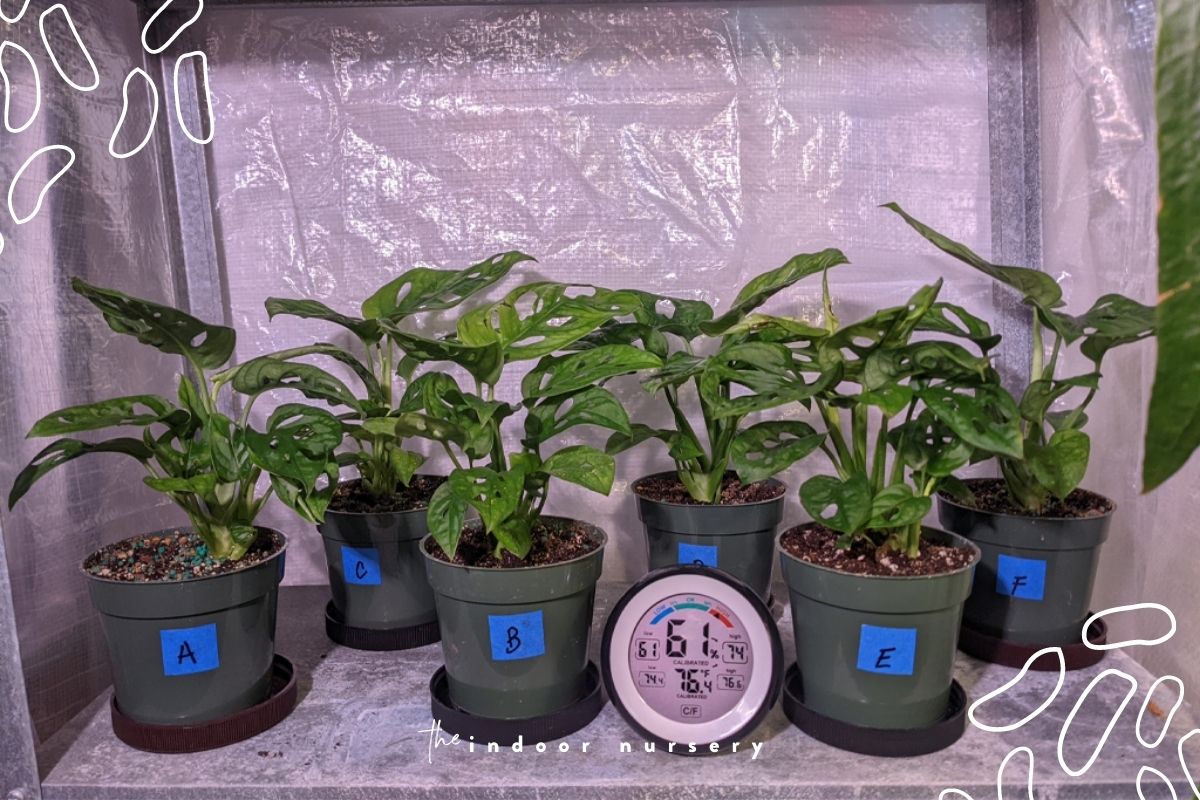
when should you fertilize indoor plants?
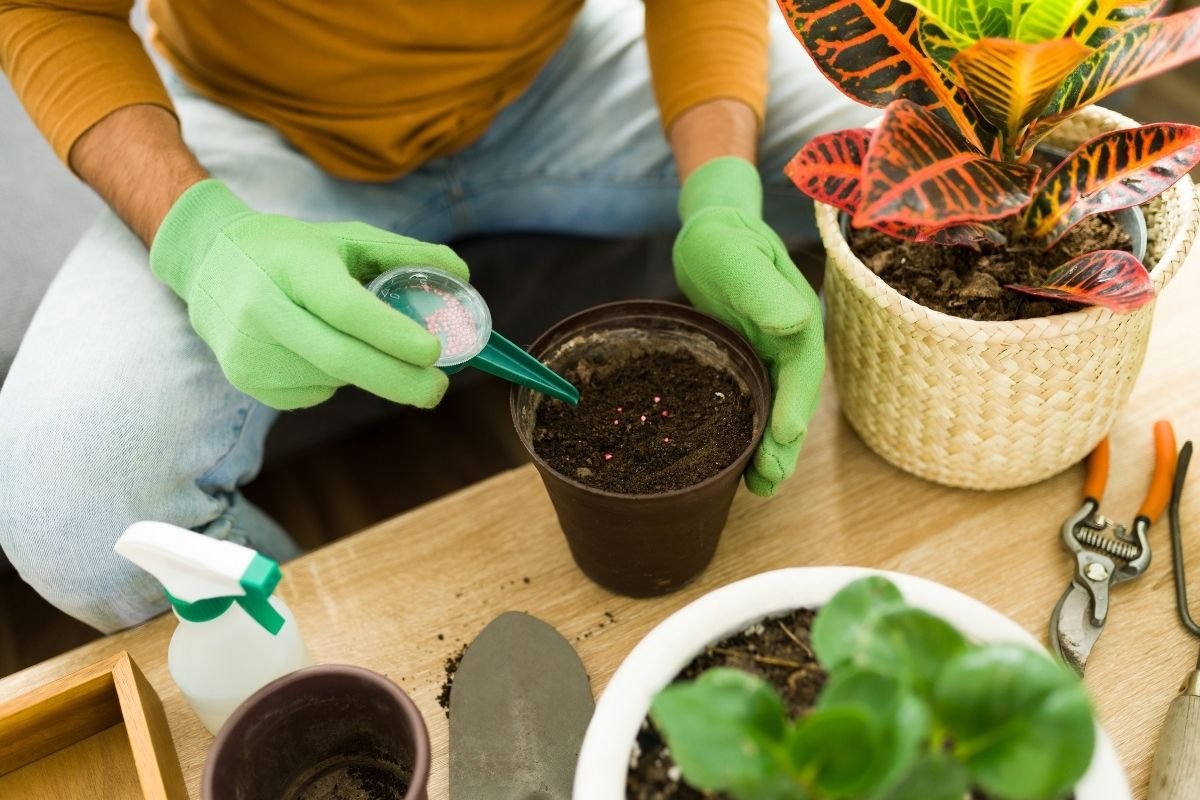
The type of plant will determine how frequently, and therefore how much, you should fertilize it, but most plants like to be fertilized at least once during their growing season. This is usually best to do at the beginning of spring, when the plant is coming out of a period of slow growth or dormancy. As with the type of plant, the type of fertilizer you use will influence how often you can apply during the growing seasons.
factors that affect how much fertilizer to give a plant
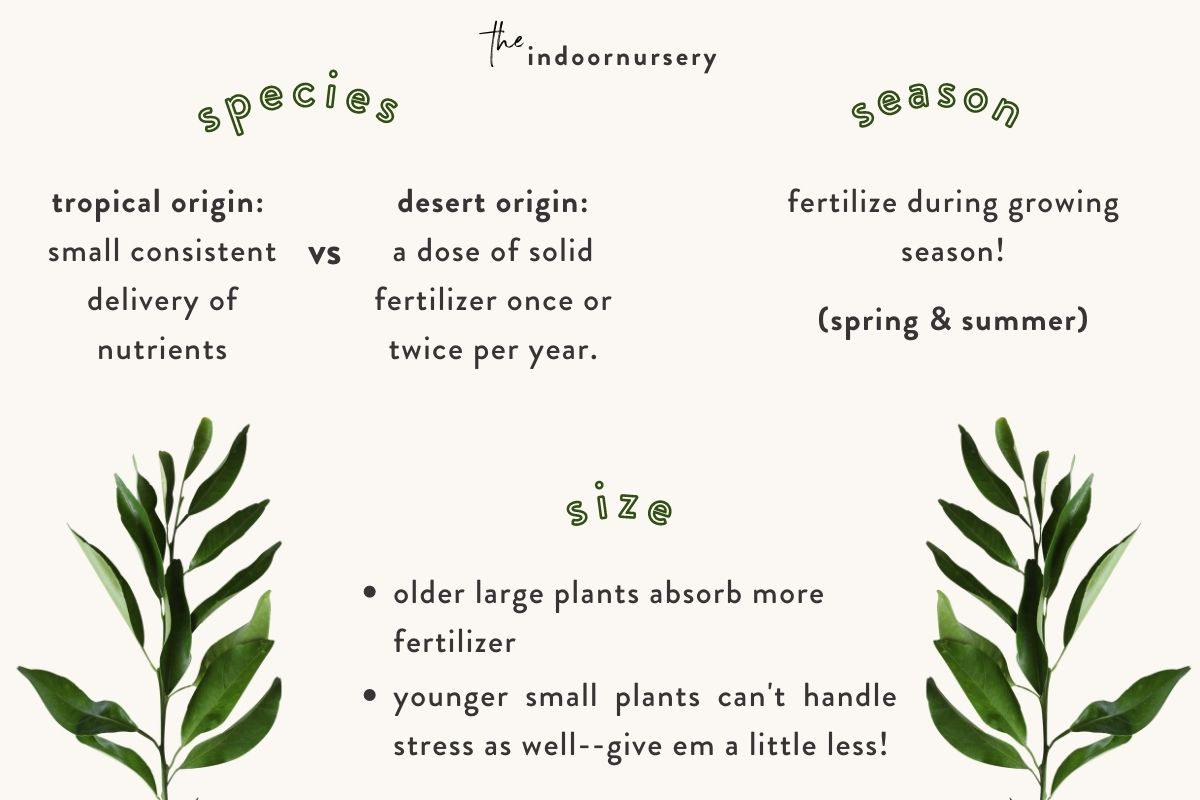
In addition to the type of plant, its location and age will also affect how much fertilizer you should give it. Of course, you should only give the plant fertilizer when you know the soil isn’t already at capacity with one or another kind, since too much of one or another nutrient is bad for the plant’s health. Doing a soil nutrient test before application is the best way to know for sure.
species
Some species of plants like more fertilizer than others, and you can look at their places of origin to see what sort of soil they developed in. Tropical plants that are from moist environments, like monsteras and some types of dracaena, like a small, consistent delivery of nutrients during their growing season since they come from rich jungle topsoil. Others, like succulents and cacti, are from places where they have to be more efficient with nutrient uptake, and they prefer a dose of solid fertilizer once or twice per year.
season
The rule of thumb for when to fertilize is during the plant’s growing season, usually during the spring and summer months. During these months with more light and higher temperatures, the plants put out more growth, especially when given the right amount of fertilizer.
size
Larger plants absorb more fertilizer than smaller ones can, so be sure to consider the size and age of the plant when measuring out a fertilizer dose. Small and young plants aren’t able to tolerate stress as well as older ones, so what might be a tolerable amount to a plant twice the size of another may be too much for the smaller one to handle.
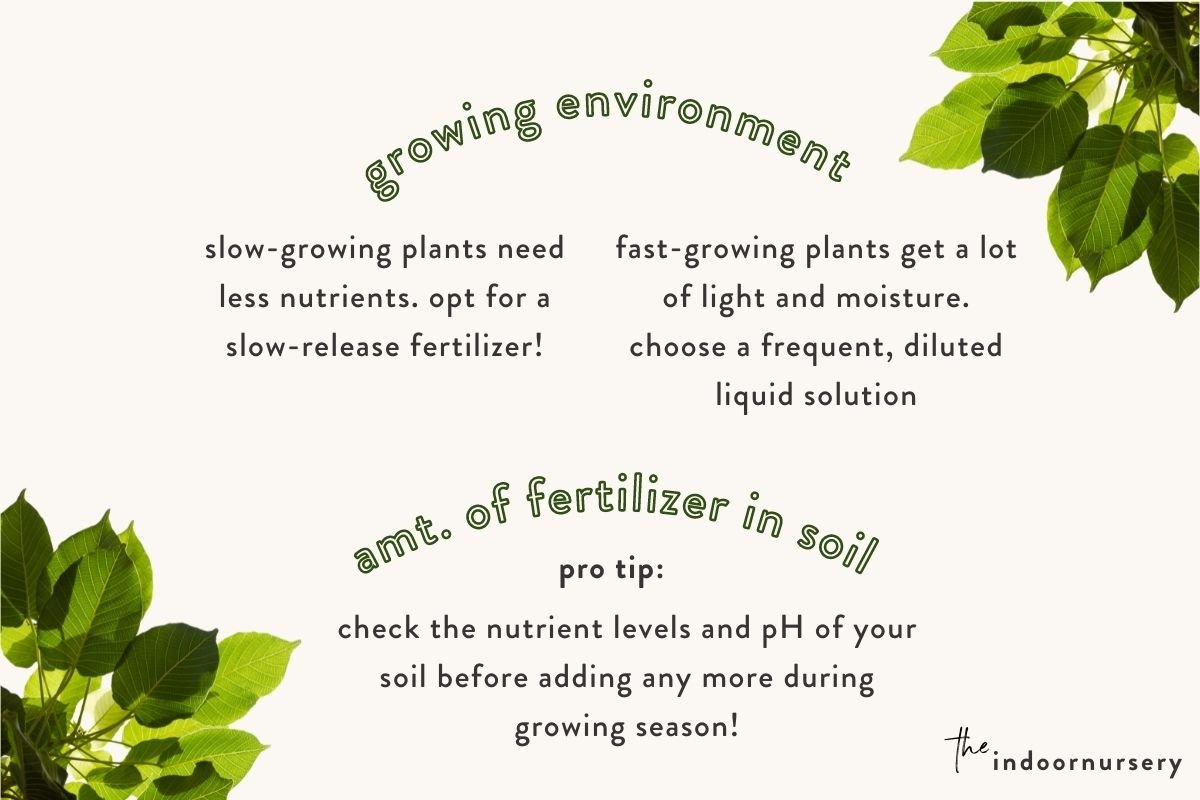
growing environment
The amount of light a plant gets, as well as the humidity level and amount of water it’s receiving, can affect how quickly the plant grows, and by extension, how much fertilizer it will draw from the soil. A slow-growing plant will need less nutrients than one that is growing quickly, so a slow-release or organic fertilizer would be best. For fast-growing plants that get a lot of light and moisture, a more frequent, diluted liquid solution will keep them happiest.
the amount of fertilizer already in the soil
Before adding fertilizer at the beginning of the spring growing season, you should check the soil’s nutrient level to be sure you’re not adding nutrients that may still be present. If the soil pH is unbalanced, one or another nutrient may be present but unable to be absorbed. If a plant had an especially slow growing season last year, due to low light or not enough water, it might have not completely depleted the soil and wouldn’t need much of an application.
Over time, you’ll get used to how quickly your plants absorb nutrients, but if you’re unsure, do a nutrient test, or apply a smaller amount. Less is more when it comes to uncertainty about fertilizer!
signs your plant is getting too much or too little fertilizer
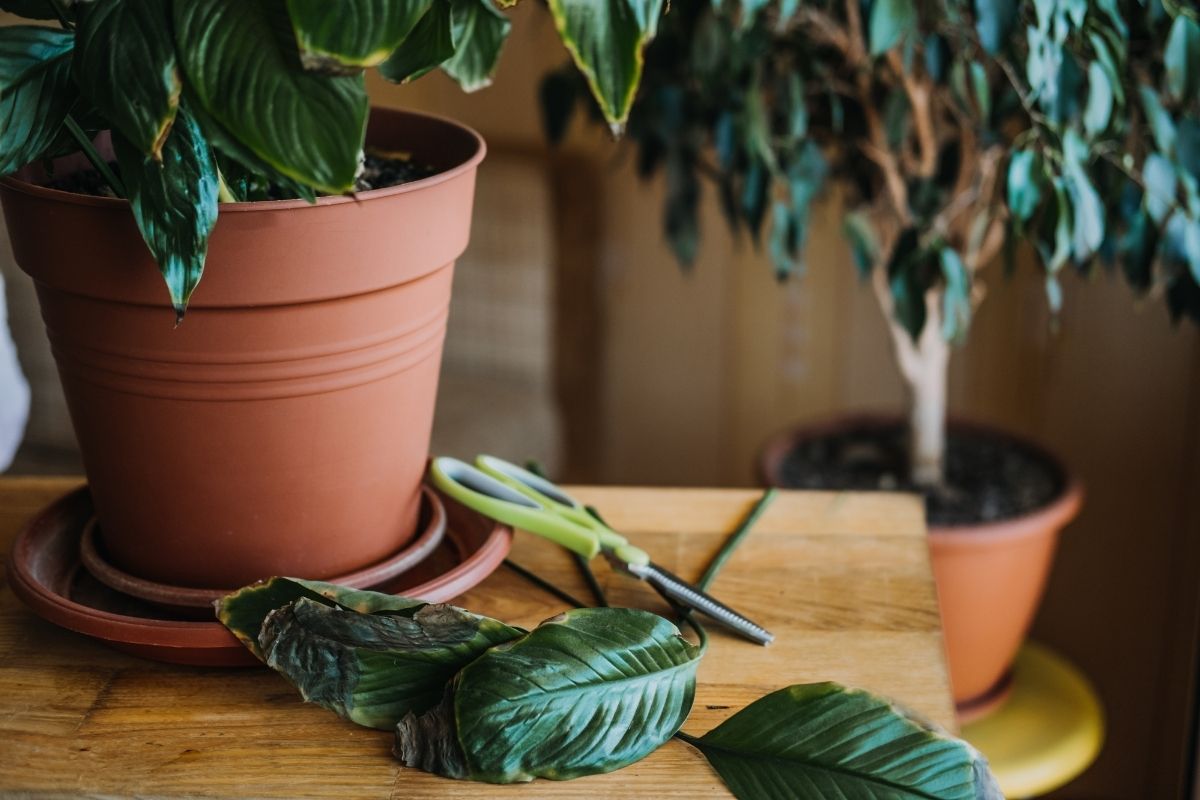
While there are telltale signs that a plant is being over- or under-fertilized, they may also be signs of too much or too little water. When you notice one or more of these signs, be sure to inspect the soil moisture and do a soil test before adding more fertilizer. Too little fertilizer shows on the plant as yellowing and wilting leaves, brown tips, as well as slow growth. Too much fertilizer can similarly yellow and wilt leaves and result in brown tips, usually following damage to the root system from fertilizer burn.
FAQ
do different plants need different kinds of fertilizers?
Some plants may need different quantities of certain nutrients, but the basic nutrients are all the same. For example, a flowering plant will want more potassium than a leafy plant without flowers. Plants with hearty roots and stems may appreciate more phosphorus than plants with small roots. Similarly, plants with lots of greenery will like more nitrogen than plants with fewer leaves.
what’s the difference between plant food and fertilizer?
Fertilizer might be labeled as plant food, but plants actually make their own food in the form of sugars from nutrients that fertilizer provides. Photosynthesis is the process that plants use to make sugar, which involves the sun’s UV rays and the plant’s chlorophyll, of which nitrogen is a key part. Nitrogen, phosphorus, potassium, and the range of micronutrients found in soils and fertilizers all support the plant in making and transporting its food internally.
More about fertilizing
- 10 Best Worm Composter Bins For Easy Homemade Compost
- Compost Starter 101: When You Need It And How To Make It
- Our top pothos fertilizer picks for luscious vines
- 5 reasons to use coffee as fertilizer for your plants
- Best fertilizer for Monstera plants for gorgeous leaves
- Fertilizer Burn on Plants? Here’s How to Fix it
- Fiddle leaf fig fertilizer: How to feed your fiddle leaf

